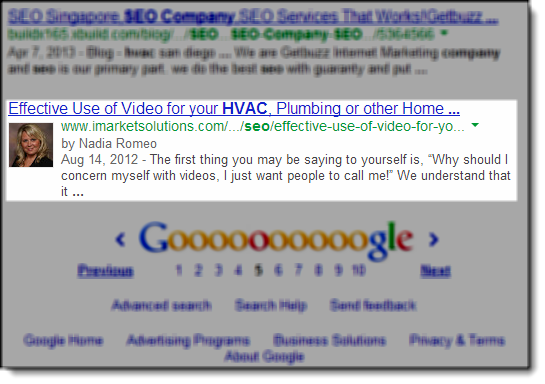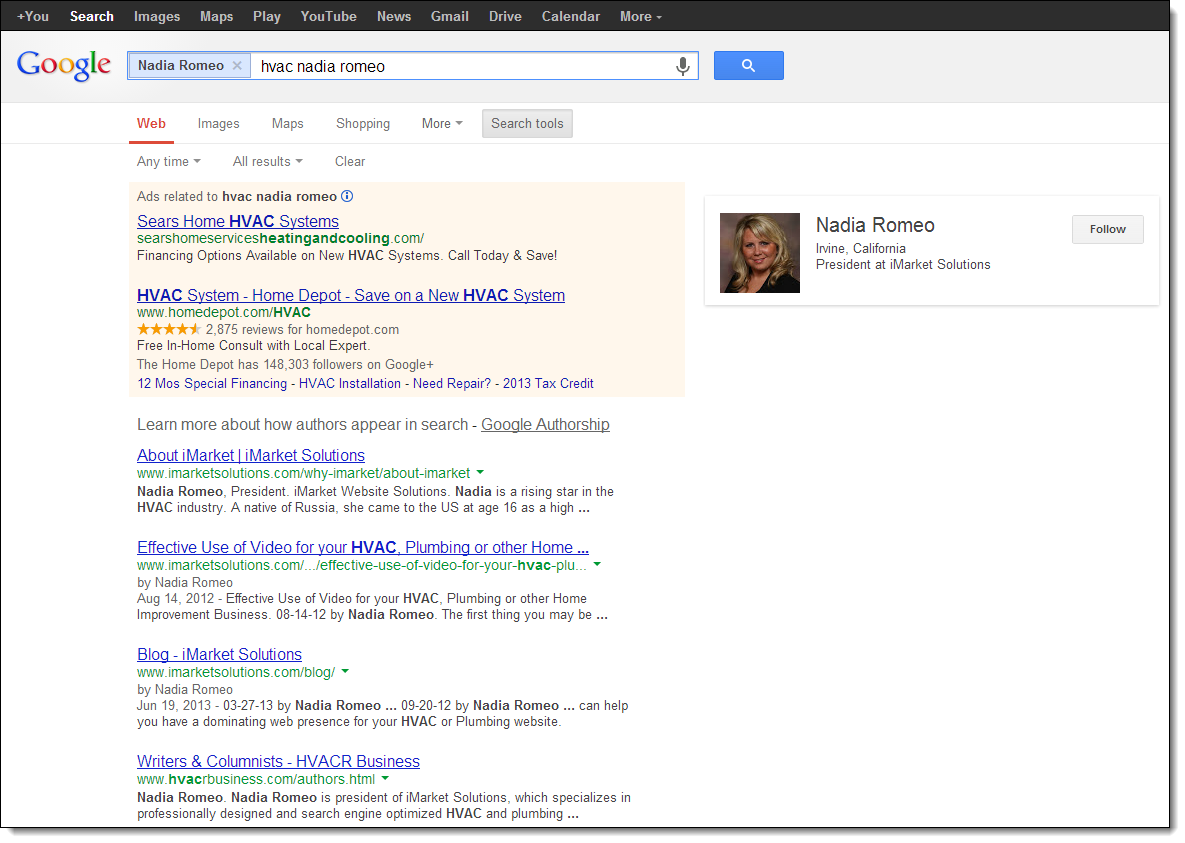Blog
June 07, 2011 marks a significant date in the history of Google - the introduction of Google Authorship. Othar Hansson, a software engineer at Google, announced via the Google Webmaster Central blog the introduction of authorship markup in Google’s web search. Experts on search engine optimization and Google’s algorithms could immediately foresee the importance of this feature. But interestingly enough, Google’s authorship markup has flown under the radar for quite some time. To help shed light on the value of Google authorship, allow us to elaborate on the history of authorship and its perceived benefits.
What is Google Authorship?
In the most straightforward terms, Google authorship is a markup (coding) which can be implemented onto websites with blogs, allowing authors who post on those blogs to take credit for their content. When properly set up, the author’s Google Plus profile picture appears next to his or her content in search results (as seen in the below screenshot), along with a home page address, if pertinent. Though initially welcomed with open arms by well-known writers in the SEO industry (such as Barry Schwartz), as well as other large brands (such as the Washington Post, Entertainment Weekly and CNET), authorship has really only recently become more common in Google’s search results.

So the question remains: why is Google authorship only now becoming more common?
We believe there are multiple reasons:
- At the time of its introduction, quality content creation did not stand at the forefront of most SEO company proposals (if they even listed it at all). “Fly by the seat of their pants” SEO companies were not prepared for, nor convinced, that delivering quality content would be essential to gaining better rankings, especially when they could still reap the rewards by focusing on large amounts of outsourced or scripted, low-quality link building. And until Penguin reared its “beak” in April of 2012, the majority of Google’s search results reflected these more spammy techniques. Fortunately, with the release of Penguin 2.0, we’re seeing fewer low-quality sites and more original and quality content curators appearing higher in Google searches.
- “We wanted to make sure the markup was as easy to implement as possible,” Othar stated in the original announcement from Google. Ironically enough, that wasn’t the case. The comments of the authorship markup and web search post reflect the frustrations of countless webmasters perplexed at how to implement the new markup onto their websites. Since then, Google has built several resources to help users set up authorship. You can easily set up authorship here, and the structured data testing tool can help you verify the accuracy of your authorship markup code.
- With Panda, Penguin and other Google algorithm updates rolling out on a regular basis, everyone may just be too busy trying to recover and adapt to the new algorithms. After all, who has time to figure out the set-up process for some new complex Google feature that may or may not positively impact their site’s search visibility?
Now that the storm has settled and fewer algorithm updates become public, more and more users are finally setting up and verifying Google authorship for their websites. If you’re contemplating such a step – setting up authorship for either yourself or a client – you need to consider the potential benefits.
Google Authorship Benefits
We can still only speculate on exactly how Google Authorship will tie into Google’s search engine ranking algorithms. However, you can still reap some direct benefits from setting up authorship sooner rather than later.
The benefits of Google authorship include:
- Increased Click-Through Rate – Justin Briggs wrote a great post which included statistics on how user behavior is changing in Google’s search results. He makes it clear that one’s authorship image draws far more attention than a regular search snippet. In an attempt to understand why an authorship image increases click-through rates of listings in Google, our SEO Manager Matt Dimock found in a small test done a few years back. It indicates that the addition of an author tag increased the percentage of visitors to a specific landing page by almost 15%, while maintaining the same position in the SERPs.
-
Content Ownership – Prior to authorship, it could be difficult to find good quality content from a trusted source. Now people can more easily find the content they want from sources they trust by clicking on the “by [Name]” link. For example, if you click on “by Nadia Romeo” while doing a search for HVAC Nadia Romeo, you will see all content Nadia Romeo, the President of iMarket Solutions, has written and verified ownership of, as well as her own personal Google knowledge graph.

- Personal Branding – Everyone is aware of the thought leaders and big brands in their respective industries. Naturally, we gravitate to content written by these more reputable sources because they are probably more inclined to share content worth reading. If you’re well known within your industry, then it makes all kinds of sense to let your image show within Google’s search results.
- Build Trust with Your Community – Unless you look like Barry Schwartz (who speculates that Google removed his authorship image for being ugly), your authorship image could help build trust with your community. After all, they say a picture is worth a thousand words and that you only get one first impression, so don’t blow it; dress sharp and smile for the birdie.
Now that you know the history and some of the known benefits of Google authorship, what are you waiting for? Go and verify your Google authorship today!
If you are in the HVAC, plumbing or electrical business and need help with setting up authorship on your blog, give us a call or contact us today.
